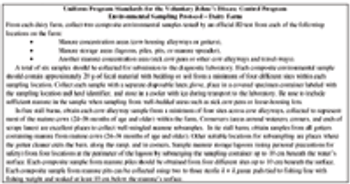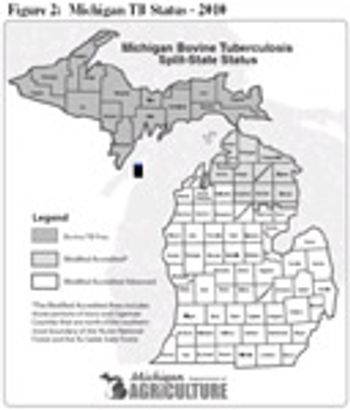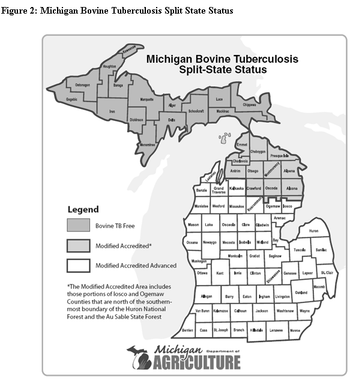Articles by Dan Grooms, DVM, PhD

Bovine viral diarrhea virus (BVDV) is one of the most important infectious agents of cattle. The annual economic loss caused by BVDV is difficult to quantify but certainly is significant. The insidious nature of BVDV combined with the biology of the virus and complex disease pathogenesis has made control and prevention of this virus challenging.

More than 60 years ago an enteric disease of cattle was described in North America that was characterized by outbreaks of diarrhea and erosive lesions of the digestive tract. The disease was called bovine viral diarrhea virus or BVD. The virus causing BVD was named bovine viral diarrhea virus (BVDV).

More than 60 years ago an enteric disease of cattle was described in North America that was characterized by outbreaks of diarrhea and erosive lesions of the digestive tract.17 The disease was called bovine viral diarrhea virus or BVD. The virus causing BVD was named bovine viral diarrhea virus (BVDV).

Mycobacterium avium subspecies paratuberculosis (MAP), the causative agent of Johne's Disease (JD), is prevalent worldwide. The NAHMS Dairy 1996 study, estimated 21.6% of the dairy herds in the US were infected with MAP, resulting in annual economic losses for the dairy industry of $200-250 million.

The issue of disease transmission between species is nothing new. Veterinarians have always been aware of the potential risk of wildlife being a source of disease transmission to livestock. A classic example is transmission of Leptospirosis species from wildlife to cattle via urine contamination of the environment.

Many dairy producers use Rumensin? (Elanco Animal Health) in dairy heifers as an aid to controlling coccidiosis and for improved feed efficiency. Rumensin? also is approved for use in lactating cows as a tool for improving milk production efficiency. Monensin, the active compound in Rumensin?, has a very wide safety margin for humans and cattle. But, it can be toxic if not fed according to the FDA-approved label. In other species, such as horses, monensin can be extremely toxic.

The Michigan Johne's Disease Control Demonstration Project is a cooperative program between Michigan State University (MSU), Michigan Department of Agriculture (MDA), and the United States Department of Agriculture (USDA).

Bovine viral diarrhea virus (BVDV) is one of the most important infectious agents of cattle.

Bovine Tuberculosis (bTB) is an infectious bacterial disease that poses a risk to domestic livestock and wildlife in the United States (U.S).

Bovine viral diarrhea virus (BVDV) is one of the most important viral pathogens of cattle worldwide.

Bovine viral diarrhea virus (BVDV) has emerged as one of the most important infectious disease agents in cattle.





